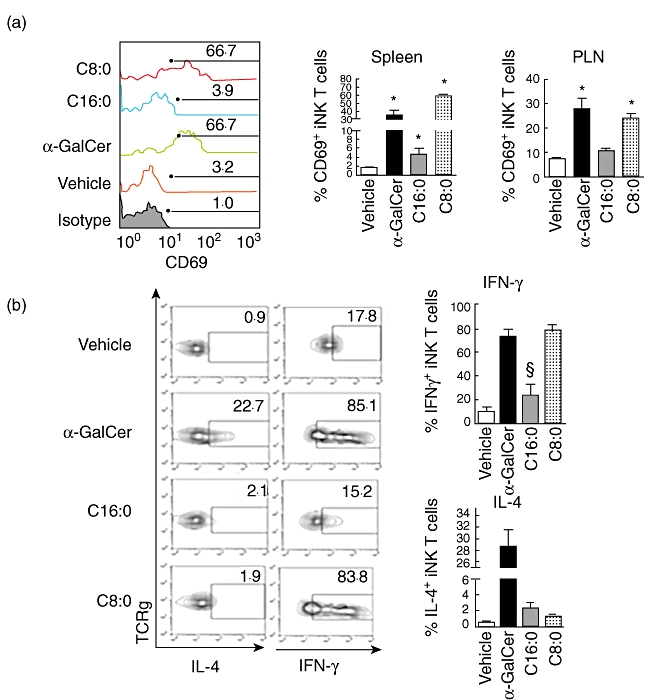Fig. 4.

Early activation of invariant natural killer T (iNK T) cells in vivo. Female non-obese diabetic (NOD) mice (n = 5, 6-week-old) were injected intraperitoneally with glycolipid (4 µg) or vehicle control. Spleens and pancreatic lymph nodes (PLN) were harvested 2 h later and placed into single cell suspension free of erythrocytes. Cells were stained with anti-T cell receptor (TCR)-β, CD1d-tetramer [phosphate-buffered saline (PBS)-57-loaded or -unloaded] and anti-CD69. The cells were fixed and permeabilized, then stained intracellularly with anti-interleukin (IL)-4 and anti-interferon (IFN)-γ. (a) CD69 surface expression on iNK T cells. Left panel: representative fluorescence activated cell sorter (FACS) plot for each treatment group. Right panel: mean ± standard error of the mean (s.e.m.) surface CD69 expression for each treatment group. Numbers show percentages of CD69+ iNK T cells. Asterisks (*) indicate statistical significance (P ≤ 0·05) relative to vehicle control values. Representative data shown were obtained from one of the five mice analysed. (b) Intracellular cytokine data from cells in (a). Left panel: representative FACS plots for each treatment group. Right panel: average (mean ± s.e.m.) percentage of IL-4+ or IFN-γ+ iNK T cells for each treatment group. Gating was based on isotype controls. §Values are significantly (P ≤ 0·05) less than those obtained in the α-galactosylceramide (α-GalCer) and C8:0 treatment groups. Representative data averaged from five mice per experiment in one of three independent and reproducible experiments are shown.
